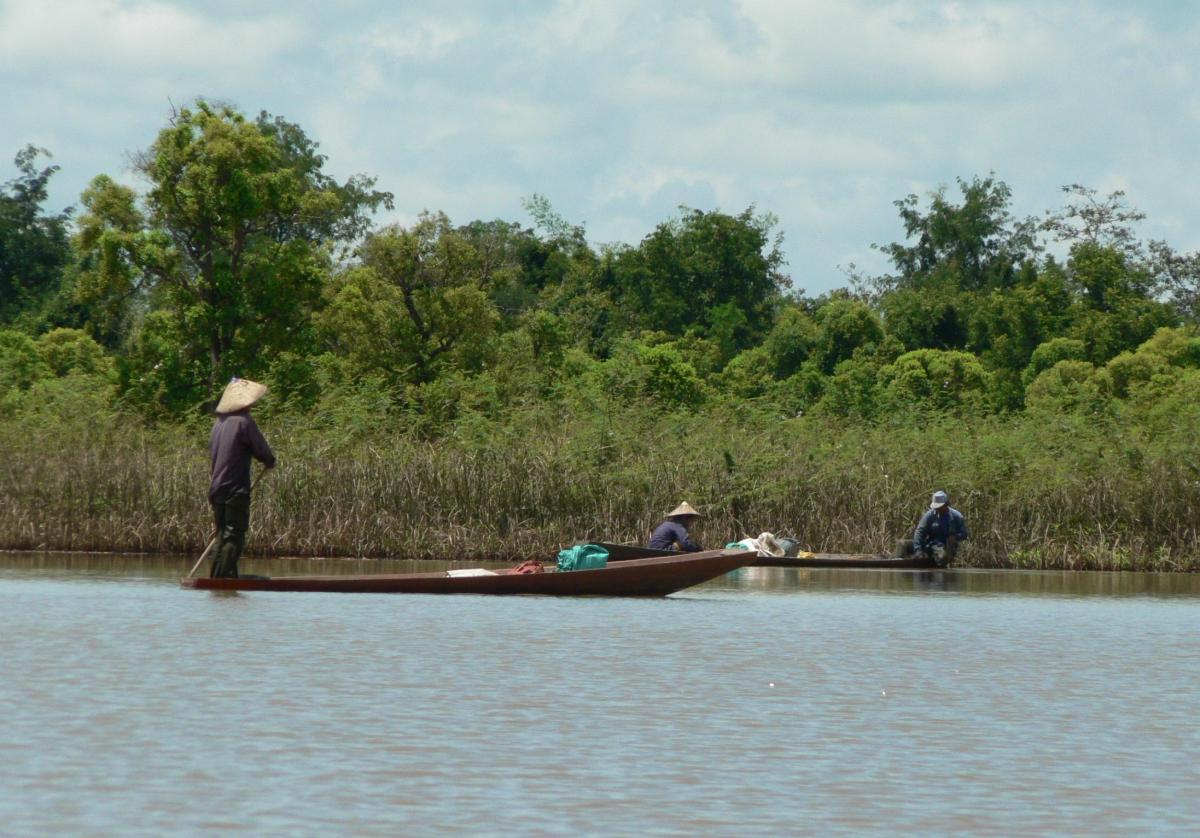A new lizard species discovered in Lao PDR from Karst landscape harbouring IUCN Green List Sites
A new microendemic genus and species of a limestone-dwelling agamid lizard was discovered in the northernmost segment of the larger Central Indochina Limestone landscape, in Khammouane province, Lao PDR. Three National Parks reside within this landscape, including the Phou Hin Poun proposed National Park, Hin Nam No National Park in Lao PDR, and Phong Nha-Ke Bang National Park in Viet Nam, from west to east. Phou Hin Poun is a future IUCN Green List applicant site, while the latter two have already been listed as Green List applicant sites. The landscape is also one of the priority conservation corridors of the Critical Ecosystem Partnership Fund (CEPF).
The name of this newly discovered species is Laodracon carsticola, or the Khammouane Karst dragon. It was first discovered in August 2022, when a botanist team conducting a plant survey spotted an “unusual” looking lizard on the karst rocks nearby.
The Khammouane karst dragon is considered “medium-sized,” reaching about 1 foot (about 30 centimetres) in length. It has a triangular head, long and slender appendages, as well as bluish-gray eyes and roughly textured scales. Its body is black with a few larger white bands on its back and speckles of white across the rest of its head and limbs. Its belly and a spot under its throat are tinged blue.
When still, these lizards become almost invisible in the mosaic of sharp shadows and light spots and are difficult to spot unless they start moving. Khammouane karst dragons were seen climbing or sitting atop rocky peaks between about 50-70 meters up. Locals described the lizards as “rare,” most active in the afternoon and entirely restricted to the rocks. The new species “likely evaded earlier discovery due to its very specific habitat preferences of living high on hardly accessible steep karst pinnacles,” researchers said. The construction of a nearby elevated walkway and zip line course also “likely aided the chances of observing this unique (lizard) species.”
Researchers named the new species after its preferred habitat. “Carsticola” is a combination of the German word for limestone, “karst,” and the Latin word for resident, “cola”. The new species was identified by its DNA and physical features including its scale texture and pattern, body shape and colouring.
The research team included Peter Brakels, Species and Protected Areas Programme Coordinator at IUCN Office in Lao PDR, who contributed to the collection of specimens, data analysis, among others.
More information about the discovery can be found in a study published in the Zoological Research journal (http://doi.org/10.24272/j.issn.2095-8137.2023.062).



